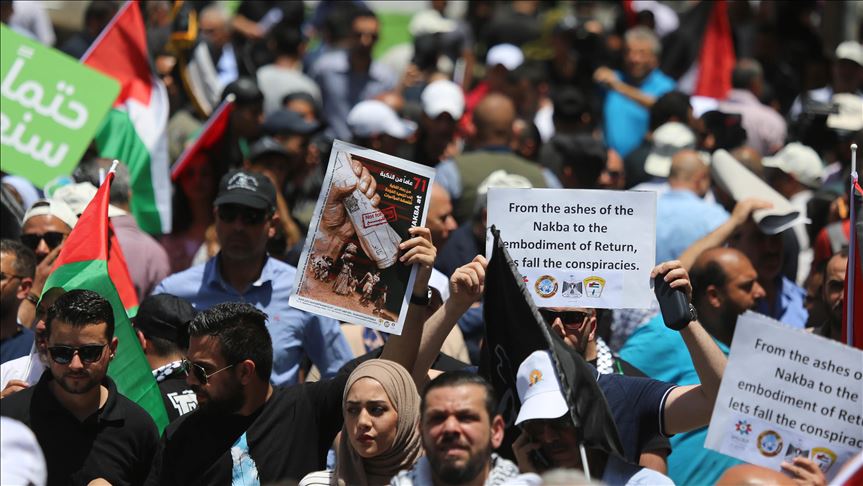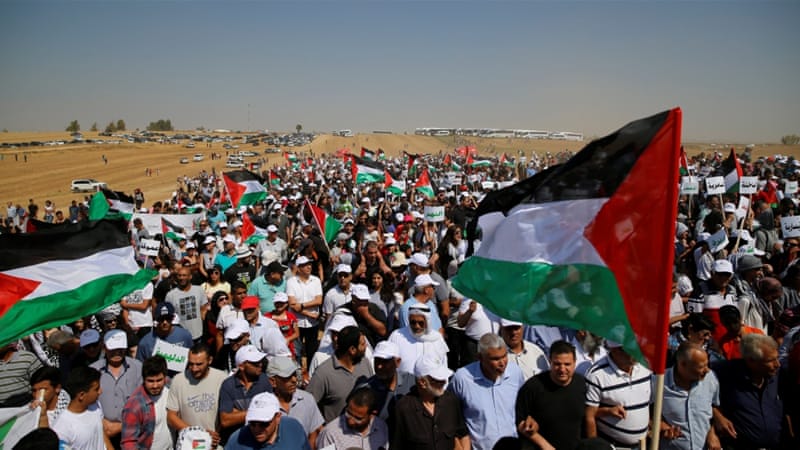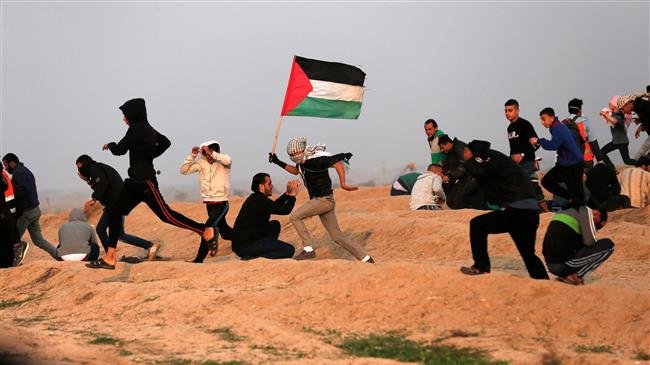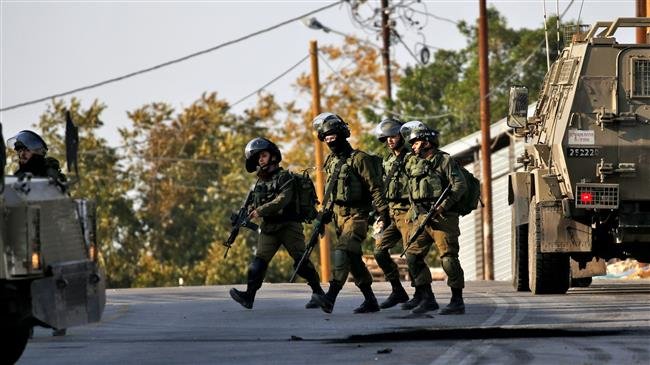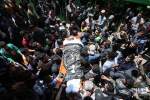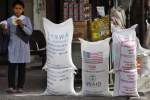More than seven decades since their expulsion from historical Palestine in 1948, Palestinians continue to find new ways of pressing for their cherished right to return.
Publish dateWednesday 15 May 2019 - 23:41
Story Code : 185146
AVA- Seventy-one years ago, hundreds of thousands of Palestinians were forced to flee their villages and towns in historical Palestine to neighboring countries as Jordan, Lebanon and Syria.
Another part of Palestinians found themselves displaced to the Gaza Strip and West Bank amid rising attacks by Zionist gangs to pave for the way for the creation of the state of Israel.
On April 9, 1948, more than 250 Palestinians were killed by Zionist gangs when they carried out a deadly attack on the Palestinian village of Deir Yassin.
Palestinian use the term "Nakba", or “The Catastrophe” in Arabic, to refer to the 1948 expulsions by Zionist gangs.
The Palestine-Israel conflict dates back to 1917 when the British government, in the now-famous Balfour Declaration, called for “the establishment in Palestine of a national home for the Jewish people”.
According to UN refugee agency UNRWA, more than 1.5 million Palestinians -- almost a third of the already registered Palestine refugees -- are scattered in 58 recognized refugee camps in Lebanon, Jordan, Syria, the Gaza Strip and the West Bank, including East Jerusalem.
Despite their decades-long suffering, however, Palestinians still continue to affirm on their right to return to their homes and villages in the historical Palestine, coming up with creating ways to make this right achievable.
The latest of such ways to keep the right of return livable in memory was staging weekly protests along the Gaza-Israel buffer zone.
During the 54 weeks since the protests began in March of last year, nearly 270 demonstrators have been killed -- and thousands more injured -- by Zionist troops deployed near the buffer zone.
"The right to return is the core of the Palestinian cause," Ahmed Abu Ruteima, an organizer of the Great March of Return, told media on Wednesday.
"The Palestinian refugees still believe in this right," he said. "Young generations inherit the keys of the homes of their grandfathers as a way of keeping this right livable in their minds."
Uncompromising right
Abu Ruteima says that the idea of the Great March of Return came to translate demands to return to historical Palestine into action.
"Protests over the past year have emphasized that the right to return is a genuine and solid right that cannot be relinquished," he said.
Hasan al-Habeel, a Gazan youth who has just arrived in Turkey to pursue his studies, shared with Anadolu Agency his year-long experience in participation in the Great March of Return.
"As a Palestinian youth, who lived the Second Intifada and experienced three Israeli wars launched over Gaza, the Great March of Return represents the most critical stage in my life," he said.
"Every member of my family, including father and mother, were taking part in the protests," he said.
This way of struggle, al-Habeel argued, "revived the people’s awareness about the right to return".
"We have seen elderly people, children, women and youth flocking to the security fence," he said. "It is all about the hope that the Great March of Return has created."
"The Great March of Return has nipped in the bud all claims that the new generation of the Palestinians would forget about this right one day," he said.
Al-Habeel believes that the mass participation of young Palestinians in the protests means that "they look to the right to return as a holy issue that will not be forgotten or relinquished".
Another part of Palestinians found themselves displaced to the Gaza Strip and West Bank amid rising attacks by Zionist gangs to pave for the way for the creation of the state of Israel.
On April 9, 1948, more than 250 Palestinians were killed by Zionist gangs when they carried out a deadly attack on the Palestinian village of Deir Yassin.
Palestinian use the term "Nakba", or “The Catastrophe” in Arabic, to refer to the 1948 expulsions by Zionist gangs.
The Palestine-Israel conflict dates back to 1917 when the British government, in the now-famous Balfour Declaration, called for “the establishment in Palestine of a national home for the Jewish people”.
According to UN refugee agency UNRWA, more than 1.5 million Palestinians -- almost a third of the already registered Palestine refugees -- are scattered in 58 recognized refugee camps in Lebanon, Jordan, Syria, the Gaza Strip and the West Bank, including East Jerusalem.
Despite their decades-long suffering, however, Palestinians still continue to affirm on their right to return to their homes and villages in the historical Palestine, coming up with creating ways to make this right achievable.
The latest of such ways to keep the right of return livable in memory was staging weekly protests along the Gaza-Israel buffer zone.
During the 54 weeks since the protests began in March of last year, nearly 270 demonstrators have been killed -- and thousands more injured -- by Zionist troops deployed near the buffer zone.
"The right to return is the core of the Palestinian cause," Ahmed Abu Ruteima, an organizer of the Great March of Return, told media on Wednesday.
"The Palestinian refugees still believe in this right," he said. "Young generations inherit the keys of the homes of their grandfathers as a way of keeping this right livable in their minds."
Uncompromising right
Abu Ruteima says that the idea of the Great March of Return came to translate demands to return to historical Palestine into action.
"Protests over the past year have emphasized that the right to return is a genuine and solid right that cannot be relinquished," he said.
Hasan al-Habeel, a Gazan youth who has just arrived in Turkey to pursue his studies, shared with Anadolu Agency his year-long experience in participation in the Great March of Return.
"As a Palestinian youth, who lived the Second Intifada and experienced three Israeli wars launched over Gaza, the Great March of Return represents the most critical stage in my life," he said.
"Every member of my family, including father and mother, were taking part in the protests," he said.
This way of struggle, al-Habeel argued, "revived the people’s awareness about the right to return".
"We have seen elderly people, children, women and youth flocking to the security fence," he said. "It is all about the hope that the Great March of Return has created."
"The Great March of Return has nipped in the bud all claims that the new generation of the Palestinians would forget about this right one day," he said.
Al-Habeel believes that the mass participation of young Palestinians in the protests means that "they look to the right to return as a holy issue that will not be forgotten or relinquished".
avapress.net/vdceen8zpjh8vzi.1kbj.html
Tags
Top hits
